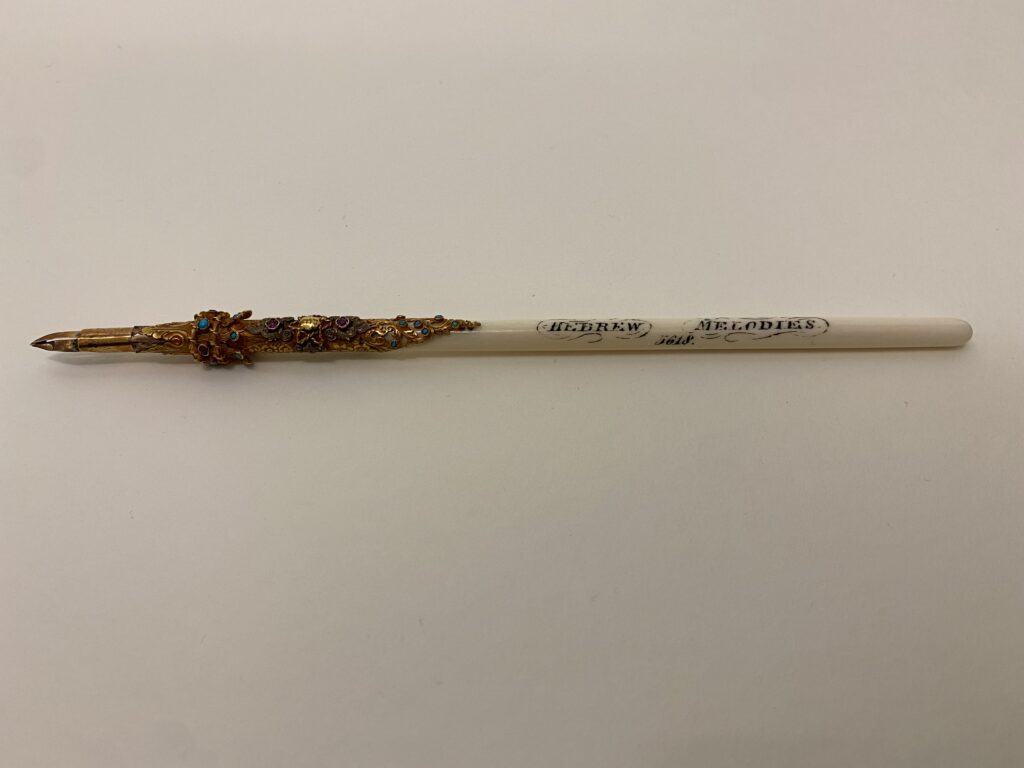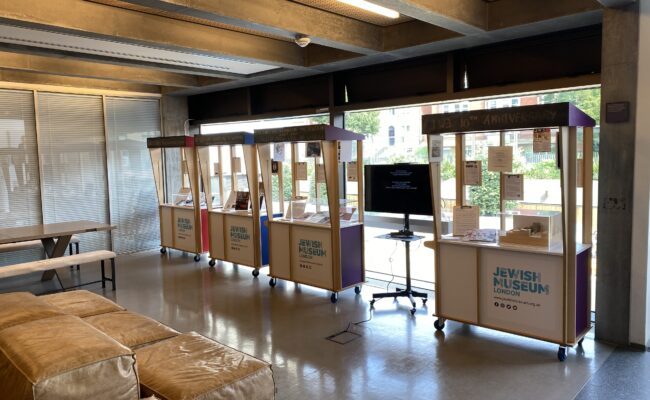A conversation between Claire Mead, Jewish Museum London & Rabbi Shalom Morris, Bevis Marks

Museum: Could you summarise who are you and what does Bevis Marks does?
Rabbi Morris: My name is Shalom Morris. I’m the Rabbi of Bevis Marks synagogue, the oldest synagogue in the UK, which has been in continuous use since 1701, making it one of the longest continuously worshipped synagogues in the world. That continuity enables the community to maintain its unique traditions, including the liturgy, the customs within the synagogue itself, and the way that different rituals are performed.
It also includes the melodies; traditions that have been passed down orally, from generation to generation, enabling this unique heritage of the Spanish and Portuguese Jews to be preserved in this space, really unlike, anyplace else in the world. Stepping into Bevis is essentially stepping into another world. And it’s a remarkable experience.
Museum: That must be something really special for the community, to have that memory of place preserved
Rabbi Morris: The community takes great pride & joy in preserving and sharing this with others. Part of my role also takes on another element when it comes to preserving this unique heritage. We’re building a Heritage Centre, and so it’s contributing towards the narratives and the process of developing that experience for visitors too. Bevis is often called the cathedral synagogue of British Jewry. It’s a site of incredible importance to all British Jews; there’s that kind of national element as well, which then goes beyond – a space between the Jewish community and the broader society as well.
The topic relates a lot to the object that we’ve selected. In its essence, it’s an attempt by David Aaron de Sola to accurately preserve these melodies, providing a basis for which people can continue to learn the traditions. I think there’s a great sense, especially in a place like Bevis Marks synagogue, of appreciating that one’s life is very much only as a result of those who have come before us. We then have this responsibility to ensure that what we enjoy will be here for those of us afterwards, as well. And I think that’s the kind of thing that people sometimes just say, but when you’re in a place like Bevis Marks, it’s something that you are quite keenly aware of.
Museum: It’s really the idea of the different layers of music being able to reveal past influences as well. And knowing where these come from to arrive in that place.
Rabbi Morris: That’s right. And, you know, some of the melodies in this book go back to pre-expulsion in Spain, including melodies written by David Aaron de Sola himself. If you visit other Spanish & Portuguese synagogues around the world, the melodies aren’t always exactly the same. But they’re always distinctly Spanish and Portuguese melodies, with a certain feel to the music that’s recognisable. And I think that’s something that, even once you get beyond the specific melody, the very tempo of the prayers in Spanish and Portuguese synagogue feels quite different from what one would experience really in any other synagogue, whether other Sephardic or other Ashkenazi synagogue. So it really is… almost a way of praying.
Selecting an object
Museum: Thank you very much. Let’s talk more about Sephardi music and the specific objects that you chose to encapsulate that tradition and that sense of identity through music
Rabbi Morris: Sure, though one point to make is that this music is very different to what people normally think of when they think of Sephardi. So Sephardi is a term that includes Jews who live all over the world. I only say this because mostly when someone hears ‘Sephardi’, they have one understanding of what that means and it’s very easy to give people the wrong impression if they don’t know the context.
There’s lots of distinct identities within that one definition. And I think that that’s something which is so rich, and it’s something that there’s very few places left in the Jewish world where that is apparent. I find that for a lot of people, it’s kind of this ‘a-ha’ moment, that kind of wake up where, you know, you almost imagine, you would have gone to villages across Eastern Europe as well and there would have been nuance and differences and so on. And so in a sense this notion that from town to town, it would be different, it wouldn’t just be this homogenised prayer. So, these objects really act as a tangible link to that time?
It seems to me, I don’t know for sure, that the publication of this book was a celebrated event – there’s certainly a sense of something special. You know, in terms of De Sola, this is something he’s doing at the end of his career. So it’s something that I think speaks to this awareness that he’s getting older. There is this sense that he was kind of, he had this connection, a sense to the 18th century – the melodies he knew were really from the 18th century. And so here now, as you move through the 19th century, it’s saying, ‘I’m going to preserve it so that we can remain connected to that earlier, that pre modern time’. To be able to view these objects, to read them, to learn from them, it ultimately connects us back to that time. That sense of memory becomes encapsulated through these things and again, I think there was a great awareness of the significance of what he was doing. Commemorative pens such as this one celebrating Hebrew melodies, possibly relating to Lord Byron’s 1815 publication, emphasis this.
Museum: Thank you very much. It’s obviously something that this awareness of continuity is continuing in terms of the Heritage Centre you’re building. Are there specific goals, and plans of preservation of music and recordings? Are you going in that direction as well?
Rabbi Morris: So thankfully, one of my predecessors recorded all of the synagogue music which has been available online for some years now. So that’s there for people, and there’s now a project being undertaken by the Society of Heshaim, to actually in a sense do what De Sola had done for specific melodies; using the correct language it’s to preserve in musical notation the entirety of the liturgy for everything; for every prayer, every holiday, every occasion; an official record of the music, that, allows people to do things accurately; a resource which they can turn to, to learn the melodies.
The melodies are meant to fit the language of the prayers; it can go up or go down because of the meaning of a particular word. And so, you know, you want it to make sure that it’s done accurately so that it continues to capture what the melody is meant to do, not to just be something pretty to listen to, but to evoke the meaning of the words themselves.
Find out more at: www.sephardi.org.uk/bevis-marks/

